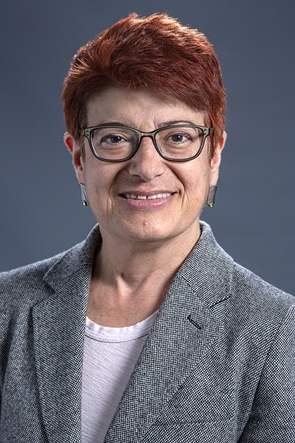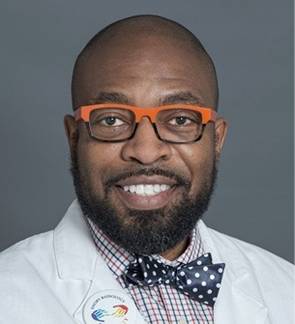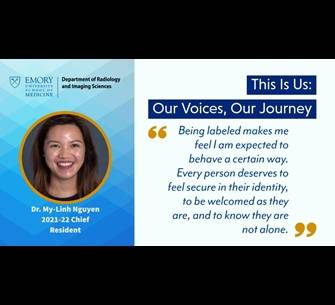Emory radiologists make intentional changes to embed diversity, equity, and inclusion into everything they do.
- After uncovering inequities in pay, hiring, and promotion, radiologists at Emory University made a commitment to embed diversity, equity, and inclusion into all aspects of the department, from hiring to promotion.
- The team created a guide to help search committees attract a diverse pool of qualified candidates and mitigate bias in hiring practices. It also launched a leadership academy to increase diversity among the department’s leadership.
- In 2007, the department ranked below the national average for the percentage of underrepresented people in medicine and now, thanks its targeted efforts, it ranks well above the national average.
In 2007, after discovering a significant compensation gap between men and women faculty members in the radiology department at Emory University, Carolyn C. Meltzer, MD, FACR, then the newly appointed department chair, knew it had to be addressed. But she didn’t stop there.
Meltzer recognized that the department had other diversity, equity, and inclusion (DEI) issues to resolve, too. For instance, the department was incredibly homogenous — 79% of the faculty and nearly the entire leadership were men — and she committed to changing it.
 Carolyn C. Meltzer, MD, FACR, chair of the radiology at Emory University, is leading efforts to embed diversity, equity, and inclusion into every aspect of the department. |
“I knew we needed to embrace the entire concept of diversity, equity, and inclusion to make our department the best it could be,” Meltzer says. “We wouldn’t be able to recruit the best and brightest if we were seen as a primarily white and male organization. When people look at a team, they want to be able to see themselves in it — so they can imagine a successful future.” (Read this Imaging 3.0 case study to learn how Meltzer closed the pay gap in her department.)
Meltzer’s compensation gap discovery and analysis of the department’s composition triggered what has become the radiology department’s ongoing commitment to embedding DEI into every aspect of its culture and work. DEI’s value in medicine has been well documented, with research showing that diversity among staff increases innovation and creativity — much-needed qualities in the quickly changing healthcare landscape.1
Since Emory’s radiology team began intentionally engraining DEI into its milieu with updated hiring practices, reengineered incentive and compensation processes, and regular unconscious bias training, it has seen notable results. For instance, the number of women on the department’s faculty has increased by 67%.
What’s more, Meltzer has gone from being the only woman on the department’s 11-person executive leadership team to one of five women on the team, and the percentage of women and/or members of underrepresented in medicine (URM) groups who hold director-level faculty leadership positions has surpassed 40%.
Being Intentional
Meltzer was already passionate about DEI before joining Emory, and many people in the department were also interested in increasing the department’s diversity. “A lot of us were looking for opportunities to push DEI forward, but it was often fragmented,” says Jamlik-Omari Johnson, MD, FASER, vice chair for DEI in the radiology department at Emory.
In 2008, that changed when the radiology department began creating a strategic plan for the future of the department. Meltzer knew that progress would be difficult to achieve without a documented path forward. She recruited radiologists, technologists, and other staff members who showed an interest in DEI to form a team that would develop a foundation for the department’s DEI efforts.
Together, the team members decided that all aspects of the department’s climate, culture, and work needed to reflect their commitment to DEI. They conducted an environmental scan, reviewing literature about organizational and business management as well as gender and racial disparities in business and medicine. They also examined department metrics, such as the number of women and URM colleagues among the faculty, staff, and leadership, and found that Emory Radiology lagged far behind representation benchmarks set by the Association of American Medical Colleges (AAMC), a statistic they wanted to improve.
The team then created a short e-mail survey to gauge how faculty members felt about the existing work climate. Questions included whether faculty members felt welcomed in the department, whether they felt that individuals had equal access to advancement opportunities, and whether they thought equitable rewards and recognition existed among department members.
Approximately 18% of faculty members participated in the survey. The results indicated that team members favored creating a more diverse team through hiring and providing more leadership opportunities for women and individuals who are considered URMs. All of this information provided a baseline for the department’s DEI work.
From there, the team drafted a strategic plan to improve retention, recruitment, and advancement policies in the department that included changing hiring practices and creating more opportunities for professional development and leadership advancement.
Diversifying the Team
With a plan sketched out, the team focused on implementing it. One of the first areas it committed to was increasing faculty diversity. “Increasing the diversity of faculty provides a varied and uniquely dispersed perspective on clinical research, teaching, service, and operational opportunities and challenges that the organization faces,” Johnson says. “It also creates a kind of ripple effect. When we increase the diversity in our department and in our leadership, we’re signaling that it’s important to the department and that women and underrepresented members in medicine can thrive here. As a result, the department becomes much more appealing to them.”
 Jamlik-Omari Johnson, MD, FASER, vice chair for diversity, equity, and inclusion in the radiology department at Emory, was eager to push the department’s diversity, equity, and inclusion efforts forward. |
The team wanted to broaden the department’s recruitment efforts to ensure it could attract qualified pools of diverse candidates. To facilitate this, Meltzer and department leaders created a best-practices guide for hiring committees. The guide includes information about everything from how teams can form diverse search committees to how the hiring committee chairs can and should mitigate bias.
The guide also mandates that every hiring committee include a set of co-chairs — one senior and one junior — to encourage all committee members to voice opinions without feeling pressure to agree with a lone chair or senior members. What’s more, the guide recommends that search committees include non-faculty staff members to flatten the hierarchy between faculty and staff, and it encourages search committees to ask candidates specific questions about DEI during interviews. “We ask candidates where they are in their DEI journey and what they’ve done in the past year to encourage DEI in their community,” Meltzer says.
Making DEI part of the interview process signals that these issues are a priority within the department, Johnson says. “When we ask candidates directly about DEI, we’re showing them that it’s important in the same way as when you ask about problem solving or critical thinking,” he explains. “We’re showing that this is
important to us, and it provides an opportunity for those not interested in that mission to step away.”
The department’s commitment to hiring a more diverse faculty and staff has paid off. In 2007, the percentage of women faculty in the department rose from 21% to 37%. Based on these results, the radiology hiring guide has been expanded and refined to become the official “Best Practices Guide for Faculty Search Committee Processes” for the entire Emory School of Medicine.
Mark E. Mullins, MD, PhD, professor and vice chair for education and director of radiology medical student education, believes that the department’s focus on DEI has improved its hiring practices. “People often ask me now what Emory’s ‘secret sauce’ is — how do we attract such great colleagues? To me, it’s because diversity, equity, and inclusion aren’t just words here. They’re ingrained into our culture.”
Opening Doors
In addition to hiring more diverse candidates, the team knew that diverse leadership was important to embedding DEI throughout the department. “Instituting best practices and committing to DEI is only as powerful as the people who lead those efforts,” says Meltzer, who regularly conducts unconscious bias training with her team as part of her demonstrated devotion to DEI. “It’s imperative that our leadership not only reflect a commitment to DEI but is also dedicated to enacting that commitment.”
As part of the 2008 strategic plan, the radiology team created the Radiology Leadership Academy (RLA) 2 to promote leadership diversity within the department. Each year, a cohort of 12 high-achieving clinical and research faculty and administrative staff from across Emory’s radiology department convene for leadership skills development and knowledge-building activities, such as expert panel discussions and experiential learning (role play or small, in-class projects).
Executive and senior leadership in the radiology department submit candidate nominations for RLA to a selection committee. The selection committee ranks these individuals based on criteria that include openness to feedback and new ideas and the ability to understand and communicate strategic goals and priorities. The 12 candidates who score highest as well as two alternates are chosen and submitted for approval by the department executive committee. Meltzer notes, “We have been intentional in ensuring that each RLA class is more diverse than existing leadership so as to build bench strength for diverse leadership talent.”
From September to May, rotating faculty members teach the cohort a variety of leadership lessons from case studies, examining real-life challenges facing Emory and imparting wisdom about managing up and advocating for others. Cohort members also work in teams to design solutions for current problems or
opportunities for the radiology department and Emory as a whole. For example, one team focused on improving education and communication for patients undergoing radiology procedures, creating a suite of educational materials, including videos and informational cards devoted to PET/CT information.
“The RLA has had a profound effect on our department,” Johnson says. “We have cohort projects that have improved the department, such as the annual faculty and staff awards ceremony, which recognizes high-functioning and their commitment to teaching, mentoring, service, and research. The awards program has fostered a sense of belonging and value among faculty and staff, which is critical to inclusion. When we look at leadership across the department, from executive leadership down to supervisors, many of them have graduated from the RLA. It’s kind of seen as a rite of passage.”
As a result of the RLA and changes to the department’s hiring and promotion process, women now account for approximately 40% of the department’s leadership and individuals who are considered URM now account for 30% of its director-level leaders. With this increase in leadership diversity, Emory radiology now ranks above the national averages for having more women and more URM in leadership. It also has more women and URM colleagues in leadership than Emory University School of Medicine as a whole. “We are proud of the example we are setting,” Meltzer says.
Quantifying Success
Although creating these efforts is important, it is equally critical to measure how successful they have been so that the radiology team can understand and build upon their effectiveness. To track whether their DEI efforts are making a difference within the department, the Emory radiology team reviews the results of the school of medicine climate survey, which analyzes how people feel about their work environment.
The school of medicine survey includes 22 questions, many of which come from AAMC’s Diversity Engagement Survey and assess how students, faculty, and staff perceive the department’s culture. For example, the survey asks whether individuals feel welcomed in the department and supported in their work.
The school of medicine has issued the Diversity Engagement Survey twice, in 2016 and in 2020. Over that time, perceptions of equality within the department have improved. In 2016, 59% of respondents agreed that the department was rewarding and recognizing individuals equitably. In 2020, that number increased to 65%.
The department’s scores on questions regarding trust, belonging, and opportunity access also improved. This improvement is particularly noteworthy given that these scores remain stagnant at the institutional level, Meltzer says. “We are doing well, but we’re not where we’d like to be yet. We recognize that this is a journey — we’re always learning, growing, and striving to be better,” she says.
Reaching Farther
In addition to improving DEI within the radiology department, these efforts have also positioned Meltzer and Johnson for new leadership positions within the school of medicine. In 2020, school of medicine leaders named Meltzer the chief diversity officer for the school and asked Johnson to serve as a radiology representative on the school’s Diversity, Equity, and Inclusion Council.
Meltzer also now leads the school of medicine’s Office of Faculty Academic Advancement, Leadership, and Inclusion. Meltzer’s goal is to look more holistically at faculty life and foster a more inclusive culture and climate at Emory. Created in 2020, the office has already begun developing new programs and initiatives, such as guiding department chairs in developing blueprints for faculty diversity and inclusion priorities. The office has also created a speaker series that connects faculty with leaders in wellness and DEI topics.
 Emory Radiology’s communications team leverages social media to amplify the department’s commitment to diversity, equity, and inclusion and engage people outside of the department in conversation around these topics. |
DEI outreach doesn’t just stop within Emory, either. The communications team in the radiology department leverages its communications channels to share DEI news and information to engage people outside of Emory in conversation. For example, they have created the This is Us: Our Voices, Our Journey initiative, a series of blog and social media posts that provide a platform for faculty, staff, and trainees to talk about their identity: how they describe themselves and how they experience, celebrate, share, and even worry about facets of their identity.
According to Camille L. Dingle, communications project manager for the Emory Radiology Department, these posts are always popular. “We have a department and a chair who support us and who understand diversity, equity, and inclusion are not buzzwords but rather essential elements of our culture,” she says. “It’s important that we spread that message and share ideas and lessons learned with others who are working toward health equity.”
Despite all of the efforts that they’ve made so far on their journey toward embedding DEI into every aspect of their department, Meltzer and Johnson agree that a lot more work needs to be done. Next, they plan to lead the team in collecting more baseline demographic data in the department and establishing recruitment, onboarding, retention, and advancement metrics to help guide its programming. “We’ll never really be done,” Meltzer says. “DEI is an ongoing commitment, and we intend to keep going.”
End Notes
1. Lightfoote JB, et al. “Improving Diversity, Inclusion, and Representation in Radiology and Radiation Oncology Part 1: Why These Matter.” JACR. 2014; 11 (7): 673-680.
2. Smith DA, Arnold WL, Krupinski EA, Powell C, Meltzer CC. Strategic Talent Management: Implementation and Impact of a Leadership Development Program in Emory Radiology. JACR. 2019;16(7): 992-998.
Creative Commons
Committing to Diversity by American College of Radiology is licensed under a Creative Commons Attribution-NonCommercial-NoDerivatives 4.0 International License. Based on a work at www.acr.org/imaging3. Permissions beyond the scope of this license may be available at www.acr.org/Legal.
Share Your Story
Have a case study idea you’d like to share with the radiology community? To submit your idea, please click here.
Now It's Your Turn
Follow these steps to begin integrating DEI efforts into your practice, and tell us how you did at imaging3@acr.org on Twitter with the hashtag #Imaging3:
- Have conversations with your colleagues. What do they want the culture/climate of your department or practice to look like?
- Look at the metrics within your department and compare them to benchmarks and national averages provided by the AAMC. Determine areas for improvement and research ways to eliminate gaps or other shortcomings.
- Use the information from your colleagues and metrics to begin discussing strategy with leadership. What might your DEI efforts look like, and how can they be integrated into your work?
Author
Meghan Edwards, freelance writer
Join the Discussion

#Imaging3 on Twitter
Call for Case Studies
